Electrons from a scanning tunneling microscope tip turn a five-arm rotor connected via a single ruthenium atom bearing to a tripod anchoring the molecular motor to a gold surface.
Controlled stepwise rotation on a single atom bearing
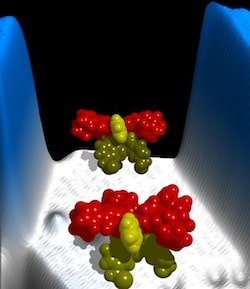

Electrons from a scanning tunneling microscope tip turn a five-arm rotor connected via a single ruthenium atom bearing to a tripod anchoring the molecular motor to a gold surface.
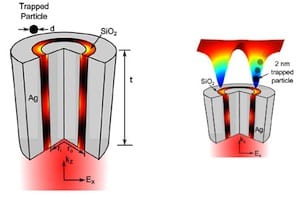
A theoretical proposal for optical tweezers and an experimental optical focusing device both depend upon electromagnetic waves trapped and guided along metal-insulator interfaces. Will these advances provide tools for manipulating molecular building blocks?
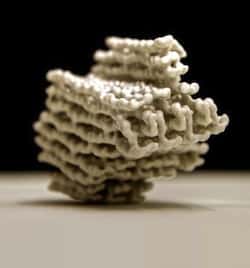
In two different sets of experiments a German research group has shown that scaffolded DNA origami can be used to assemble complex structures with precise sub-nanometer positional control, and that constant temperature reaction can greatly increase yields and decrease production times.
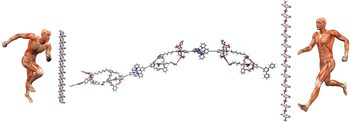
One research group working with rotaxanes and another group working with carbon nanotubes have provided two very different solutions to the problem of producing motion via artificial muscles at different scales from the nano to the macro.
A study of a biological molecular machine has shown that the machine functions most effectively when it uses chemical bonds just barely strong enough to survive the power stroke of the machine.

A set of 32-nucleotide single strand DNA bricks was designed so that each can interact independently with four other DNA bricks so that sets of hundreds of bricks can self-assemble into arbitrarily complex 25-nm 3D shapes, each comprising 1000 8-base pair volume elements.
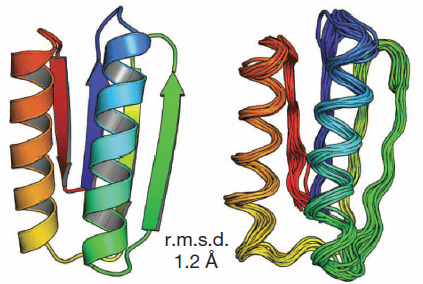
Five proteins were designed from scratch and found to fold into stable proteins as designed, proving the ability to provide ideal, robust building blocks for artificial protein structures.

A single-electron spin qubit on a phosphorous atom in a conventional silicon computer chip has been coherently manipulated, demonstrating the application of single atom nanotechnology to the development of a scalable platform for a quantum computer.

One possible pathway from current technology to advanced nanotechnology that will comprise atomically precise manufacturing implemented by atomically precise machinery is through adaptation and extension of the complex molecular machine systems evolved by biology. Synthetic biology, which engineers new biological systems and function not evolved in nature, is an intermediate stage along this path. An… Continue reading More complex circuits for synthetic biology lead toward engineered cells
Too much reliance on opportunity-based research could significantly hinder scientific advancement. We have the ability now to explore the specifics of potential future technologies, and the knowledge gained could, in turn, add useful and possibly surprising priorities for research today.